When Donald Trump was elected President of the United States much was said - half-mockingly, half-serious - about the world taking a step closer towards armageddon.
The Doomsday Clock, a visual metaphor created by the Bulletin of the Atomic Scientists in 1947, moved forwards 30 seconds, the closest it had been to midnight since the testing of the world’s first thermonuclear device in 1953.
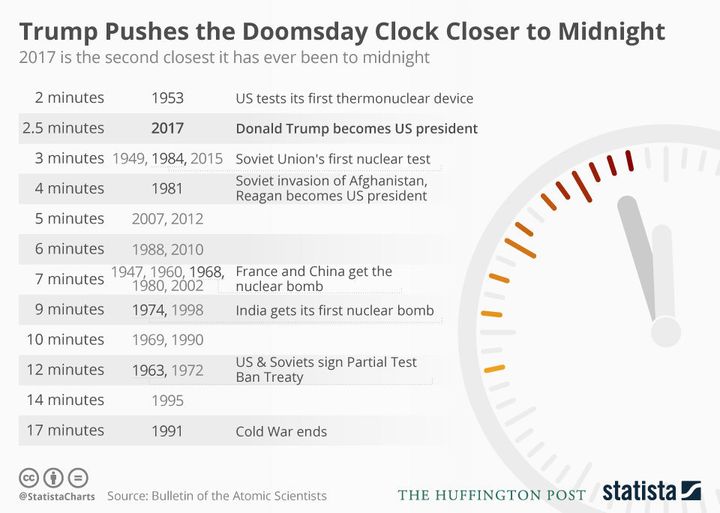
It wasn’t just Trump’s election that shifted the clock hands. North Korea’s continuing nuclear weapons development, simmering tension between nuclear-armed India and Pakistan and global efforts to limit climate change all had an impact.
But the 45th President did little to allay fears of impending nuclear armageddon with a tweet in December appealing for the expansion of the US’s nuclear capability and a call for an “arms race” in an interview a day later.
More recently he said the US should be “top of the pack” when it comes to nuclear weapons, but also added “a dream would be that no country would have nukes”.
Both sets of comments were widely mocked and condemned and his suitability as the man in charge of America’s nuclear codes were questioned, just as they were by Hillary Clinton and Barack Obama during the election campaign.
But perhaps we all shouldn’t be too quick to mock, with some experts claiming Trump was raising valid questions about the established logic behind a ‘nuclear deterrent’.
Dr Patricia Lewis, Research Director of International Security at Chatham House, told The Huffington Post UK: “People laughed at him for asking them but they’re not stupid questions.
“People started snorting with derision but actually I think it’s a really good question and I wish our politicians would ask that. Do you have a deterrent capability if you’re not going to use them?
“What sort of weapons are they if you can’t actually use them? Are they even weapons at all or are they some sort of symbolic thing?”
“He also asked why only a few countries are allowed to have them. If they’re so great why can’t they all have them?”
How many nukes does Trump have control over?
A lot.
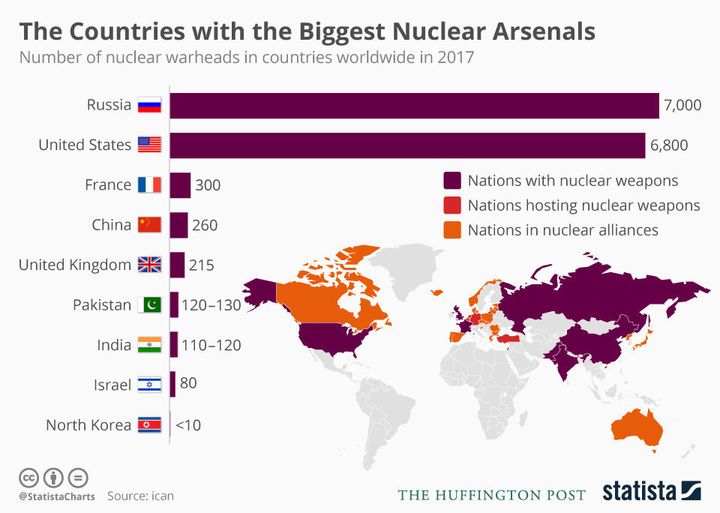
The US has approximately 6,800 nuclear warheads, just behind Russia’s 7,000.
Of these, 1,740 are deployed on bases in the US, submarines and, under NATO’s “nuclear sharing”, on bases in Germany, Belgium, the Netherlands, Italy and Turkey.
Four thousand are stockpiled and 2,800 are “retired” awaiting dismantlement.
The largest bomb in the US arsenal is the B-83 with a maximum yield of 1.2 megatons, 75 times bigger than the one dropped on Hiroshima.
If one were to be dropped on London it would have the following blast radius.
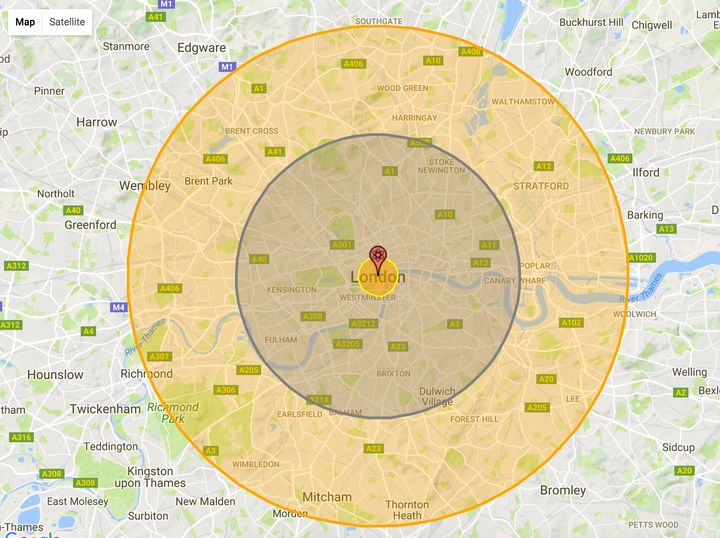
Does Trump even understand nuclear weapons?
Judging by his attempt to explain what uranium is during a press conference last month you’d be forgiven for thinking “no”.
In 1984, Trump discussed his desire to negotiate with the Russians over nuclear weapons.
During the interview with Washington Post reporter Lois Romano, he said: “Some people have an ability to negotiate. It’s an art you’re basically born with. You either have it or you don’t.
“It would take an hour and a half to learn everything there is to learn about missiles. … I think I know most of it anyway.”
As recently as last month the president was slammed for seemingly not taking the nuclear issue seriously enough, after images emerged of him reviewing intelligence reports on a North Korean missile launch with the Japanese prime minister, at an outdoor patio table at his private club, Mar-a-Lago.
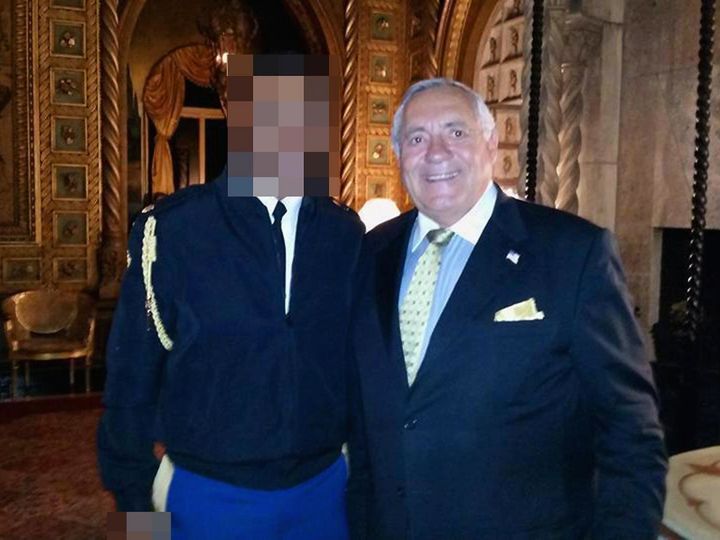
Richard DeAgazio, a relatively new member of the Mar-a-Lago club, took a number of the photos and posted them on his Facebook page ― including two photos of a presidential aide carrying the “nuclear football,” the nickname of a briefcase containing nuclear launch codes that is kept within reach of the president of the United States at all times.
DeAgazio also took photos of Trump and Shinzo Abe reviewing proposed responses to North Korea’s test under the moonlight as staffers used their phones to make the intelligence recommendations readable.
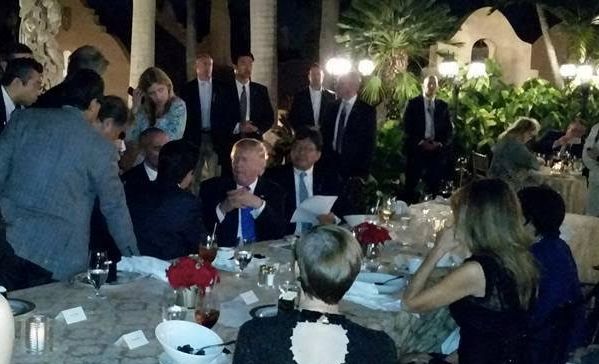
Trump’s willingness to discuss a sensitive global security issue like the North Korean test in an unsecured location represented an extraordinary break with diplomatic and security protocol, which demands that sensitive intelligence matters be discussed only in rooms that are designated as Secure Compartmentalised Information Facilities, known as SCIFs (pronounced “skiffs”).
For American president to hold a conversation with serious national security implications outside of a SCIF, as Trump appears to have done, is unprecedented in modern times, as this tweet from Barack Obama’s first-term speechwriter, Jon Favreau, underlines.
But that apparent security lapse aside, it is far more important Trump is actually aware of the consequences of a nuclear strike, not the science of one.

When he was handed the ‘football’ carrying the codes and procedure to launch a nuclear strike, he described it as a “very sobering moment”.
Chatham House’s Patricia Lewis told HuffPost UK that despite Trump’s bluster, he still clearly understands the consequences: “Is this someone who would create a conflict on Twitter and end up using nuclear weapons? Does he understand the full consequences of nuclear weapons?
“I think from what he’s said he does. I think he understands that they would have a huge impact, that they would kill instantaneously hundreds of thousands perhaps even millions of people depending on where they were used.”
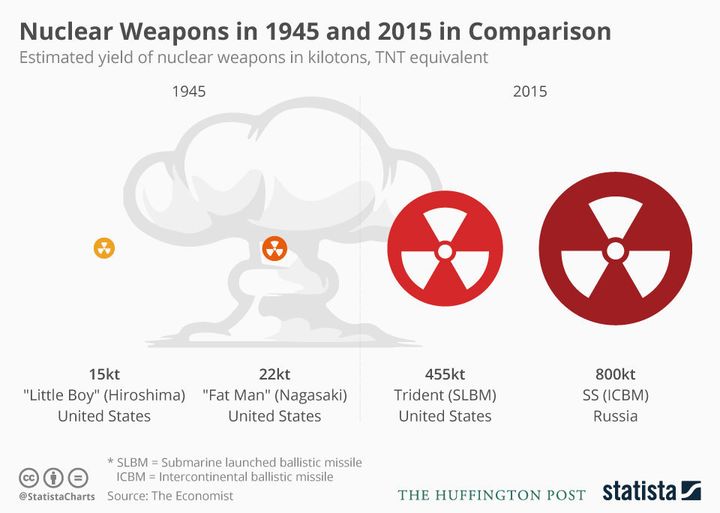
Could Trump launch a nuclear attack on his own?
The short answer is yes.
“In the US it really is on Presidential command and it is only the President that can order the release, if he is compos mentis,” says Dr Lewis.
Officially there are no checks and balances or constitutional restraints against a president launching a nuclear weapon but a fascinating episode from 1974 gives an insight into what could potentially happen.
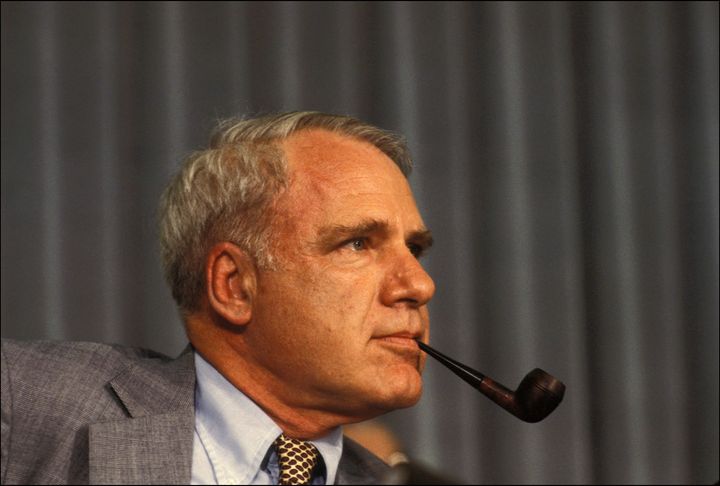
James R. Schlesinger was Secretary of Defence under then-President Nixon who, after a heavy night of drinking in the last days of the Watergate scandal, had become emotionally unstable.
Fearing a dramatic outburst, Schlesinger ordered the military to divert any emergency orders, particularly any involving nuclear weapons, to him or the secretary of state, Henry A. Kissinger.
Although this action was possibly mutinous, no one questioned it under the circumstances.
Veritasium produced this brilliantly detailed look at the process of a nuclear strike from presidential order to launch.
Is there a plausible scenario in which President Trump would launch a nuclear weapon first?
Not really.
Chatham House’s Patricia Lewis says: “I can’t imagine a scenario [where the US would strike first] but then maybe I’m subsumed in the old America still, but this is worrying people.
“Let’s imagine that Trump decides that the best way to get rid of ISIS is by nuking them. Could he do that? Maybe if he and President Putin decided to do it together and warned all their allies in the region what they intended to do and their allies created the conditions by which they were warned and given lots of advice and civil defences were put in place - it’s the stuff of movies but you wonder now if that would be one of the scenarios that they consider.
“I think they will rule it out because the damage to people would be too high. It would be far worse than anything Chernobyl or Fukushima had to offer and it wouldn’t do the US or Russia any good in terms of their standing in the world even if they obliterated ISIS. It would also be seen as disproportionate to the threat and so that could be seen under international humanitarian law as illegal.”
What about a retaliatory strike?
As well as the five nations allowed nuclear weapons under international law (USA, UK, France, China and Russia), there are four other states with nuclear capabilities and each one has come close or threatened to use it.
Israel, India and Pakistan are not adversaries of the USA so a retaliatory strike against any of them using nuclear weapons his highly unlikely.
The fourth country on the list is an entirely different matter.
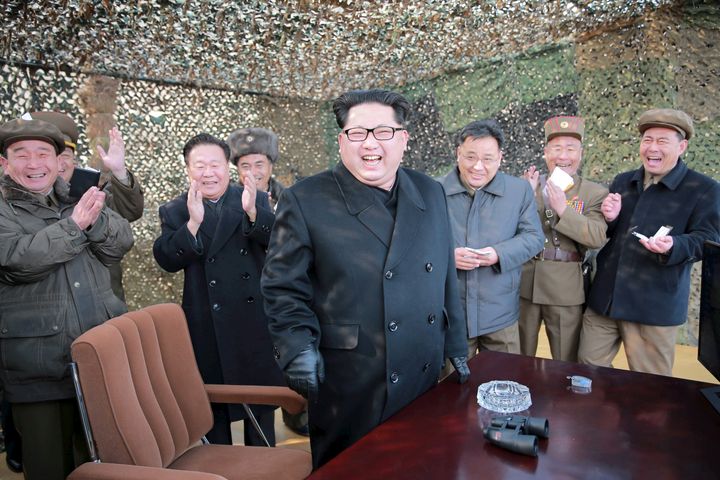
North Korea regularly indulges in nuclear sabre-rattling and the secretive nature of the country’s regime makes it incredibly unpredictable.
Dr Lewis says: “One imagined scenario is if North Korea threatens the use of nuclear weapons against say Japan which of course is Japan’s biggest fear. If they threatened would threatening them back with nuclear weapons work?
“We don’t know because we don’t know enough about what’s driving them.
“Would threatening them with conventional weapons work? Again we don’t know but it might work better because it might be more believable.
“Let’s imagine that North Korea actually uses a nuclear weapon against Japan without any threat. Japan would be in a state of complete trauma and would be talking about revenge.
“So it would probably be in the interests of the US to launch an all-out conventional attack and obliterate North Korea’s capability.”
So there you go - it’s not Trump’s itchy finger we have to worry about but Kim Jong-un’s.
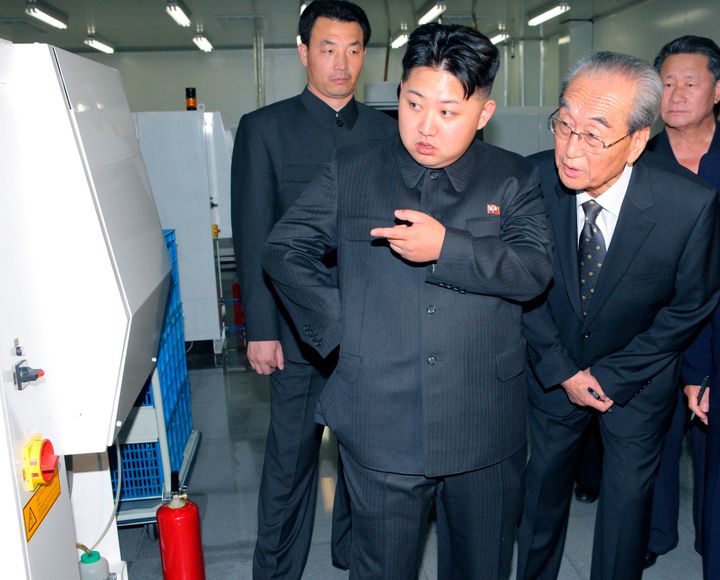
Just this week it emerged a White House review of strategy on North Korea includes the possibility of military force or regime change in an effort to counter any nuclear threat.
Trump has pledged that Kim Jong-un would be stopped from ever testing an intercontinental ballistic missile something that, coupled with the strategic review, has put regional allies on edge.
The Japanese describes the possibility of US military action against North Korea “worrisome”.
Current geopolitics aside, Dr Lewis sees a positive in the fact nuclear weapons are simply being discussed: “The sort of questions that Donald Trump is posing ought to give us pause as to whether or not these are weapons for today’s world or if they’re weapons of yesterday’s world.”
